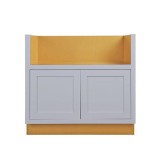What Are Armstrong Ceiling Tiles Made Of?
Knowing the composition of Armstrong ceiling tiles is crucial for understanding their performance, durability, and suitability for different applications. By exploring the essential materials and manufacturing processes involved, we can gain valuable insights into these versatile building components.
Materials Used in Armstrong Ceiling Tiles
Armstrong ceiling tiles are primarily made from a blend of mineral fibers and cellulose fibers. Mineral fibers, such as glass fibers or rock wool, provide strength, durability, and fire resistance. Cellulose fibers, derived from recycled paper or wood pulp, enhance sound absorption and acoustic performance.
Manufacturing Process
Armstrong ceiling tiles are manufactured using a wet-forming process. The mineral and cellulose fibers are mixed with water and other additives to create a slurry. This slurry is then poured onto a conveyor belt and formed into the desired tile shape. The tiles are then subjected to heat and pressure to set and harden.
Essential Properties
Acoustics: Armstrong ceiling tiles are renowned for their excellent sound absorption capabilities. The porous structure of mineral and cellulose fibers effectively traps and dissipates sound waves, reducing noise levels and creating a more comfortable acoustic environment. Durability: Mineral fibers provide exceptional durability, making these tiles resistant to moisture, impact, and wear. They are also non-combustible, enhancing safety and reducing fire risks. Fire Resistance: The combination of mineral fibers and cellulose fibers makes Armstrong ceiling tiles highly fire-resistant. They can withstand high temperatures without melting or igniting. Versatility: Armstrong ceiling tiles come in a wide range of sizes, shapes, and finishes to suit various architectural styles and functional requirements. They can be easily installed and removed, allowing for quick and flexible adjustments to any space. Sustainability: Armstrong ceiling tiles are made from recycled and renewable materials, contributing to sustainable building practices. They are also recyclable, further reducing their environmental impact.Conclusion
Armstrong ceiling tiles are carefully crafted from a blend of mineral and cellulose fibers, offering a range of essential properties that make them well-suited for various commercial and residential applications. Their excellent acoustics, durability, fire resistance, versatility, and sustainability make them a valuable choice for architects, designers, and homeowners alike.
Suspended Ceiling Mineral Fiber Ceilings Armstrong Residential

Ceilings For Commercial Use Armstrong Ceiling Solutions

12 X Ceiling Tiles 258 Ceilings Armstrong Residential

Suspended Ceiling Mineral Fiber Ceilings Armstrong Residential

Armstrong World Ceiling Tile 0 7 Nrcr Acoustic Wet Formed Mineral Fiber 91519124 Msc Industrial Supply

Armstrong World Ceiling Tile 0 55 Nrcr Acoustic Wet Formed Mineral Fiber 91519132 Msc Industrial Supply

Smooth Look Ceilings 9769 Armstrong Residential

Armstrong World Ceiling Tile 0 55 Nrcr Acoustic Wet Formed Mineral Fiber 91519181 Msc Industrial Supply

Asbestos Cement Armstrong Ceiling Tiles

Ceilings For Narrow Grid 276 Armstrong Residential








